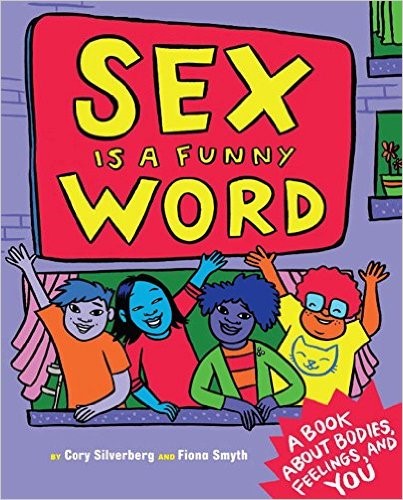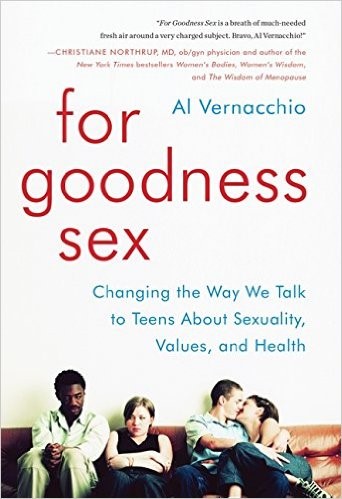What Is Sexual Orientation?
This video features a deep dive into the lesser-known labels of sexual orientation. It begins by defining sexual orientation, mentions the labels of heterosexual, gay, and bisexual, and then further defines pansexual, asexual (or ace), and demisexual. [AMZ-058]
Youth
Sexual orientation is all about who you’re romantically and sexually attracted to. Some people are attracted to those of a different gender (heterosexual), and some are attracted to those of the same gender (gay or lesbian). Some are attracted people of either the same or a different gender (bisexual), and some people do not experience sexual attraction (asexual), though they may be interested in a romantic relationship. It’s totally normal to have questions about sexual orientation, so it’s okay if you’re wondering about who you are and feel attracted to! Some people know their sexual orientation at a very young age and others don’t know until they are much older.
FAQs
Sexual orientation refers to who you feel attracted to romantically or sexually. It’s totally normal to have intense attractions during puberty. Your feelings may be so strong that they aren’t necessarily directed toward a particular type of person, but instead seem to come out of nowhere. People who identify as gay or lesbian find that over time their attraction to people of the same gender gets more clearly focused. Right now, you may find yourself falling for a classmate or developing a crush on a particular person. You may even find these experiences pleasurable, troubling, or a mix of the two. Don’t worry, as you get older it may become clearer. For many it’s a journey, and your attractions may even change over the years.
For now, you may not know how to label your romantic and sexual feelings, and you should know there’s no rush to label your feelings or yourself. Just know that this is all perfectly normal, you are not alone in asking this question and there are no “right” or “wrong” answers.
Understanding your sexual orientation can be confusing. You might feel that you don’t fit into a specific category, and you may notice that you have sexual and romantic feelings for people of your own gender and a different gender. These feelings may indicate you will identify as bisexual, but don’t worry about being unsure. Understanding your sexual orientation develops over time, and you should feel no pressure to identify in any particular way.
Yes, of course! You and your feelings are absolutely normal and you have no control over who you find attractive. Many people are gay, lesbian or bisexual. Find out if your school has a gay-straight alliance (GSA). GSAs can help you find other people who are feeling and experiencing the same things you are.
Additional Resources
Parents
A person’s sexual orientation is determined by the gender(s) of the people that person is romantically and sexually attracted to. Many people may first become aware of their sexual orientation during puberty. Hormonal changes associated with puberty can trigger new feelings of romantic or sexual attraction. This can be confusing and even a bit scary for many tweens and teens. These romantic and sexual feelings are often intense and not necessarily directed toward particular types of people. Sexual feelings for some may be provoked without cause during puberty. This can confuse tweens and teens as they begin to question their own and others’ sexual orientation. It is essential to help young people understand that it may take time to understand what gender(s) they find romantically or sexually attractive. It is also important to reiterate that there are no right or wrong answers and only they can determine their sexual orientation. As they get older, they will be better able to figure out who they find attractive.
People who identify as lesbian or gay find that over time their attraction to people of the same gender gets more clearly focused. Those who are bisexual find they are attracted to people of the same and a different gender. People who are asexual do not experience sexual attraction, though they may be interested in a non-sexual romantic relationship. Further, some people’s understanding of their sexual orientation changes over time, and some young people may resist labeling themselves in any way.
It is important that you show your children that you will love and support them always, regardless of whether they are gay, lesbian, bisexual, asexual or heterosexual. If your child has trusted you with information about his or her sexual orientation, do not share that information with others without permission. Respect them and their decision to come out when and if they feel comfortable and safe.
We have made great advances in rights for gay, lesbian and bisexual people in the United States, but homophobia continues to exist in some communities, homes and schools. Lesbian, gay and bisexual young people have the right to safe and accepting environments. They have the right to live with dignity and without fear from stigma, discrimination and violence. Gay, lesbian and bisexual youth need inclusive and culturally appropriate health care and education. And, most importantly they need to be accepted and loved for who they are.
Conversation Starters
It is important that your children know that you are open to talking about sexuality and sexual orientation with them. You could start these important conversations with your children using some of the following:
“Is there anyone at school you like or are attracted to?”
If your child says her friend’s sister or a teacher is getting married, you can say, “That is fantastic! Is she marrying a man or a woman?”
Gently correct your child. Let them know it’s not okay to use “gay” as a way to put down or demean someone or something. Tell them that if they mean “that’s so stupid,” then they should say that.
Educators
A person’s sexual orientation is determined by the gender(s) of the people that person is romantically and sexually attracted to. Many people may first become aware of their sexual orientation during puberty. Hormonal changes associated with puberty can trigger new feelings of romantic or sexual attraction. This can be confusing and even a bit scary for many tweens and teens. These romantic and sexual feelings are often intense and not necessarily directed toward particular types of people. Sexual feelings for some may be provoked without cause during puberty. This can confuse tweens and teens as they begin to question their own and others’ sexual orientation. It is essential to help young people understand that it may take time to understand what gender(s) they find romantically or sexually attractive. It is also important to reiterate that there are no right or wrong answers and only they can determine their sexual orientation. As they get older, they will be better able to figure out who they find attractive.
People who identify as lesbian or gay find that over time their attraction to people of the same gender gets more clearly focused. Those who are bisexual find they are attracted to people of the same and a different gender. People who are asexual do not experience sexual attraction, though they may be interested in a non-sexual romantic relationship. Further, some people’s understanding of their sexual orientation changes over time, and some young people may resist labeling themselves in any way.
It is important that you show your students that you will support them, regardless of whether they are gay, lesbian, bisexual, asexual or heterosexual. If a student has trusted you with information about their sexual orientation, do not share that information with others without permission. Respect them and their decision to come out when and if they feel comfortable and safe.
We have made great advances in rights for gay, lesbian and bisexual people in the United States, but homophobia continues to exist in some communities, homes and schools. Lesbian, gay and bisexual young people have the right to safe and accepting environments. They have the right to live with dignity and without fear from stigma, discrimination and violence. Gay, lesbian and bisexual youth need inclusive and culturally appropriate health care and education.
National Sex Education Standards
Define Sexual Orientation
Differentiate between sexual orientation and gender identity
Recall the definition of sexual orientation and explain that most people have a sexual orientation
Define sexual identity and explain a range of identities related to sexual orientation (e.g., heterosexual, bisexual, lesbian, gay, queer, two-spirit, asexual, pansexual)
International Technical Guidance on Sexuality Education
Discussion Questions
- How does the video define sexual orientation?
- According to the video, how might people know if they may be heterosexual, gay, lesbian or bisexual?
- What are some things we can all do to make sure that gay, lesbian and bisexual people are treated with respect?
- What would you tell a friend if they shared with you that they may be gay, lesbian or bisexual?




